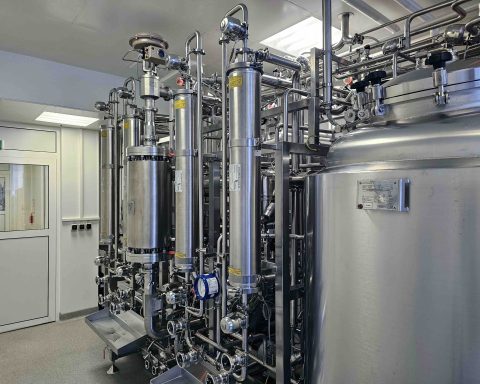Abstract
The aim of the study was to find out the important factors those influence the prescription preparation of doctors and to enrich the pharma marketing insight in Bangladesh. It was found that doctors consider company image (76.5%), brand availability (78.5%), scientific information (78%), and personal experience related confidence (76.5%) with high preference. Regular promotion (69%), promotional tools (65%) and representatives’ improvisation (71.5%) are relatively less sensitive to doctors. Whereas medical representatives think promotional regularity (87%), promotional tools (89.4%), their improvisation (89.8%) and company image (83.3%) have immense effect on prescription generation. In both aspects easy brand name, international certification and price have low significance. It was also tried to identify the perceptual difference between information provider and receiver in case of pharmaceutical product promotion in Bangladesh.
Introduction
Pharmaceutical industry is one of the progressive and perspective industries in Bangladesh. It contributes 1% to the country’s GDP and is the third largest industry in terms of contribution to government revenue (Sultana & Khoshru, 2011). The current market size is about 10,000 million with having almost persistently double digit growth (IMS Health, 2013). The market is almost self-sufficient in meeting local demand as 97% of the drugs are manufactured locally and is exporting to 92 countries (Jahan, 2011; Shawon, 2011; Hussain, 2013).
There are 267 licensed pharmaceutical companies in Bangladesh (Hussain, 2013; DGDA).About 80% of the drugs sold in Bangladesh are generics and 20% are patented drugs. The country manufactures about 450 generic drugs for 5,300 registered brands which have 8,300 different forms of dosages and strengths (Sultana & Khoshru, 2011; Jahan, 2011; Saad 2012). Among the 49 Least Developed Countries (LDCs), Bangladesh has the strongest base to manufacturing pharmaceutical products (Sultana & Kashru, 2011).
This large pharma market is principally driven by the prescriptions of doctors. Company personnel (marketing and sales division) always try to motivate doctors to prescribe their own company brands by personal selling, clinical meetings, seminars, symposia, etc because in Bangladesh the promotion of pharmaceutical products in the mass media is strictly prohibited (Jahan, 2011). The sales division (medical representatives) is playing the imperative role for marketing division.
Medical representatives regularly make sales call to doctors by sharing scientific information and competitive advantages of their products over the competitors (Habib & Alam, 2011). During prescription preparation doctors consider such factors and use brand names for treatment and patients buy the prescribed brands.
It might be helpful to pharma marketers to figuring out the factors that influence physicians to include brands in prescription which will ultimately help to sustain the development in the intense rivalry.
Materials and Methods
The focus of this study was to gain marketing insight by subjective and objective analysis of factors those influence the prescription preparation of doctors. It was a cross-sectional, descriptive and quantitative research.
By purposive, convenient sampling, 200 registered practicing doctors from Dhaka, Rangpur, Comilla, Narayongong, Mymensing and Khulna and 245 medical representatives from the same districts of Bangladesh of 16 pharmaceutical companies comprised the study population. The selected doctors were specialized in Medicine, Surgery, Gynecology, Dental and GP (General Practitioner). Designations of the medical representatives of the pharmaceutical companies were regional sales manager, area sales manager and medical information officer. To get the best knowledge on the purpose of the study, the survey method was taken as better way to communicate with the medical representatives and physicians than any other option. Questionnaire was prepared and finalized after pre testing. Pre testing was done on both the physicians (30 physician) and the medical representatives (40 representative) and no major change was made in the questionnaire. Same questionnaire was used both for subjective and objective analysis except the respondents’ part.
The measurement was made on the basis of 5 point Likert Scale. Non response was very minimal and that was filled by neutral value. All data input, format, transformation and analysis were performed using SPSS 16 version and Microsoft Excel®. The study was conducted from February 2013 to October 2013.
Better generalization can be done if the whole country was covered with addition of negative questions in the questionnaire that would more solidify the perception.
Results and Discussion
Among the 200 physician respondents 58 were female and 142 were male physicians; more specifically, 18 were dentist, 86 were GP, 45 were medicine specialist, 28 were surgeon. Among the 245 medical representatives seven were female and 238 were male, 212 were medical information officer and 33 were manager (area and regional). After analyzing the data, it was found that there is difference in response between variable to variable and doctor (subjective) to medical representatives’ (objective) response as stated in Table 1 shown on basis of summation of agree and strongly agree.
Seventy six percent of doctors consider company image during prescription generation while 83.3% representatives think the same (Fig. 1 and Table 1). 22.68% younger (25 – 35Y) doctors are strongly agreed to consider company image and 36.59% older (46Y and above) doctors have same consideration. Whereas 88.89% younger (below 25 Y) and only 25% older (46Y and above) representatives strongly agreed on it.
Sixty nine percent of doctors consider promotional regularity during prescribing medications to patients but 87% of representatives think regular promotion of brands increases prescription in favor of the promoted brands (Fig. 2 and Table 1). Younger doctors (53.61%) are more sensitive to regular promotion than older (36.59%) ones. Representatives have little more focus on product availability than doctors (Fig.3 and Table 1). Older (both doctors and representatives) people have more focus on availability maintaining.
Subjective responses of doctor and objective responses of representatives regarding competitive price of brands does not has suggestibility to have significant consideration during prescribing medications to patients (Fig. 4 and Table 1). Representatives think to have more improvisation on prescription but doctors’ response is significantly different of having less consideration of representatives during prescribing medications (Fig. 5 and Table 1).
There is no variation of responses with age in case of doctor but there is significant difference in representatives. 33.33% younger but 75% older representatives agreed to have role on changing doctors’ decision in favor of their brands. Easy brand name and international certification of the firm did not make a huge noise in the survey responses (Fig. 6, Fig. 7 and Table 1). There is much difference in consideration of promotional tools in prescription generation (Fig. 8 and Table 1) between subjective and objective assessment. Twenty five percent of older and 77.78% younger representatives strongly agreed to that.
There is a little gap in the response to have effect on prescription of scientific information and personal experience related confidence consideration between doctors and representative (Fig. 9, Fig. 10, and Table 1). Subjective response with age is similar but older (75%) agreed more than the younger (55.56%) representatives in case of personal experience.
Table 1: Comparative analysis of subjective and objective responses
|
Summation of agree & strongly agree (Percentage) |
Mean of responses in range of 1-5 (1-Strongly agree, 2-Agree, 3-Neutral, 4-Disagree, 5-Strongly disagree) |
|||
|
Variables |
Doctor |
Medical Representative |
Doctor |
Medical Representative |
|
Company image |
76.5 |
83.3 |
2.09 |
1.86 |
|
Regular promotion |
69 |
87 |
2.19 |
1.73 |
|
Brand availability |
78.5 |
88.2 |
2.04 |
1.65 |
|
Low price |
57 |
47.8 |
2.45 |
2.79 |
|
Representatives’ improvisation |
71.5 |
89.8 |
2.2 |
1.72 |
|
Easy brand name |
67 |
64.5 |
2.22 |
2.36 |
|
International certification |
67.5 |
56.7 |
2.13 |
2.41 |
|
Promotional tools |
65 |
89.4 |
2.21 |
1.57 |
|
Scientific information |
78 |
87.3 |
1.99 |
1.78 |
|
Personal experience |
76.5 |
82.4 |
2.02 |
1.85 |
Conclusion
Pharma market in Bangladesh has become hyper competitive, because every firm is competing in generic market. Medical representatives of every firm are firmly trying to create prescriptions in favor of their brands by many innovative ways. This study contains a minimum scenario of influential factors on prescription preparation and hope to see a healthy growth of pharma industry of Bangladesh.
Author Bio
• Kamalesh Halder is the Marketing Manager of Pharma Marketing, ACI Limited, Bangladesh. ACI Pharma Limited is one of the top 10 pharmaceuticals industries in Bangladesh. To know more about ACI Pharma please click here.
Conflict of Interest
References
• Habib, M. A., Alam, M. Z. (2011), “Business Analysis of Pharmaceutical Firms in Bangladesh: Problems and prospects” Journal of Business and Technology (Dhaka), Volume V1, Number 01, pp. 61-77.
• Hussain, F. (2013),“Pharmacists’ Satisfaction in Professional Life in Bangladesh” Pharma Mirror. [Online] Available at: https://www.pharmamirror.com/pharmaceutical-articles/ own-research-pharmacists-satisfaction-in-professional-life-in-bangladesh [Accessed 30th August 2013].
• IMS Health, 3Q 2013.
• Jahan, S. (2011) “Sector briefing: Pharmaceutical opportunities in Bangladesh” UK Trade and Investment, Dhaka.
• Nurunnabi, M. (2013), “Importance of research and development in Bangladesh pharma sector” Network of Bangladeshi Institute Industry and Science. [Online] Available at http://www.nbiis.org/index.php/nbiis/editorial/6-scholarship.html [Accessed on: 15th October, 2013].
• Saad, K.S. (2012),“An overview of the pharmaceutical sector in Bangladesh”, BRAC Epl Stock Brokerage Ltd, pp. 1-12.
• Shawon, S.A. (2011), Research Report: Pharmaceutical Industry of Bangladesh, IDLC Finance Limited.
• Sultana, S., Khosru, K. H. (2011), “Practice of using gifts as promotional materials for marketing of pharmaceutical products in Bangladesh: A survey conducted on general physicians and representatives from pharmaceutical companies” Stamford Journal of Pharmaceutical Sciences, Volume 4, Issue 2, pp. 13-18.
• World Bank, 2007 “Improving the competitiveness of the pharmaceutical sector in Bangladesh” Policy Note, Draft, pp. 1-37.








